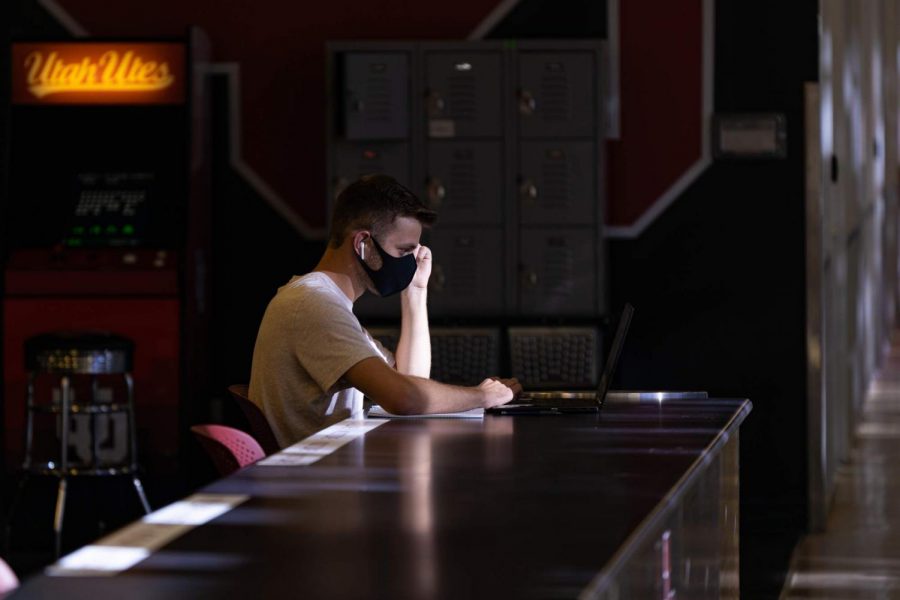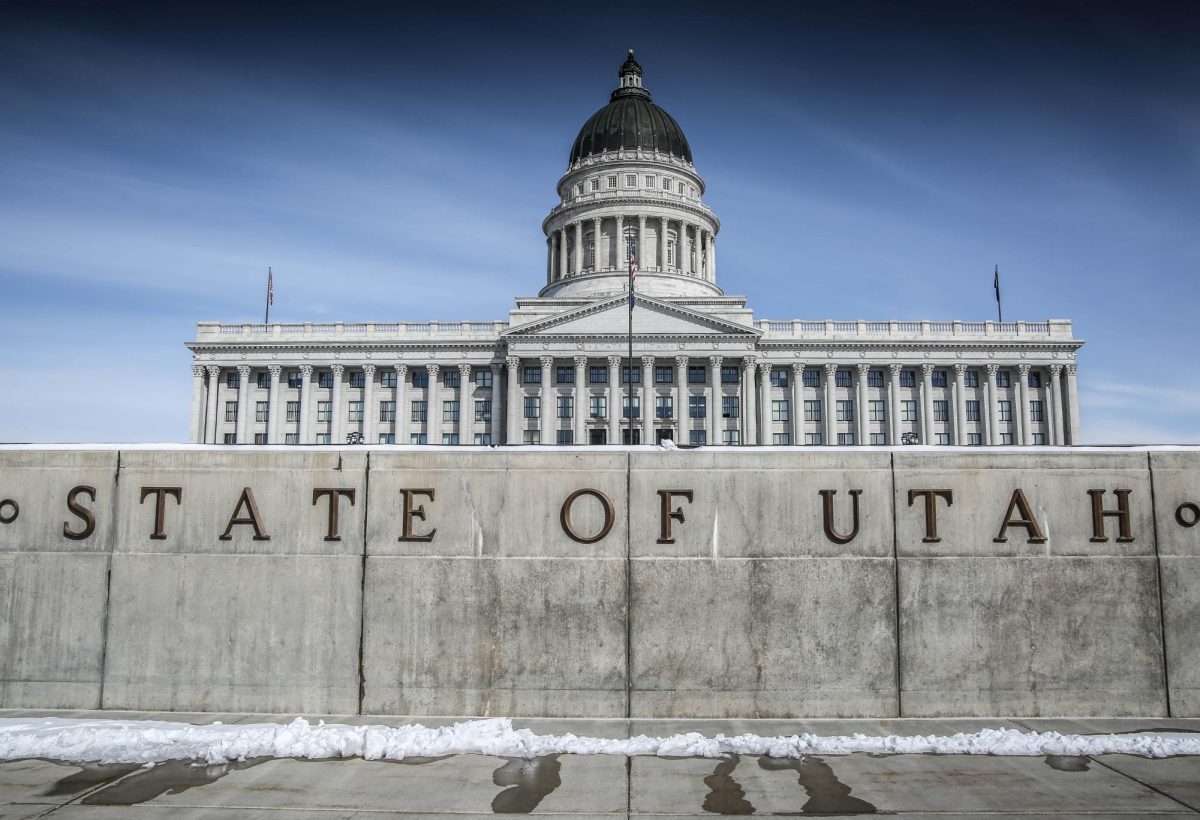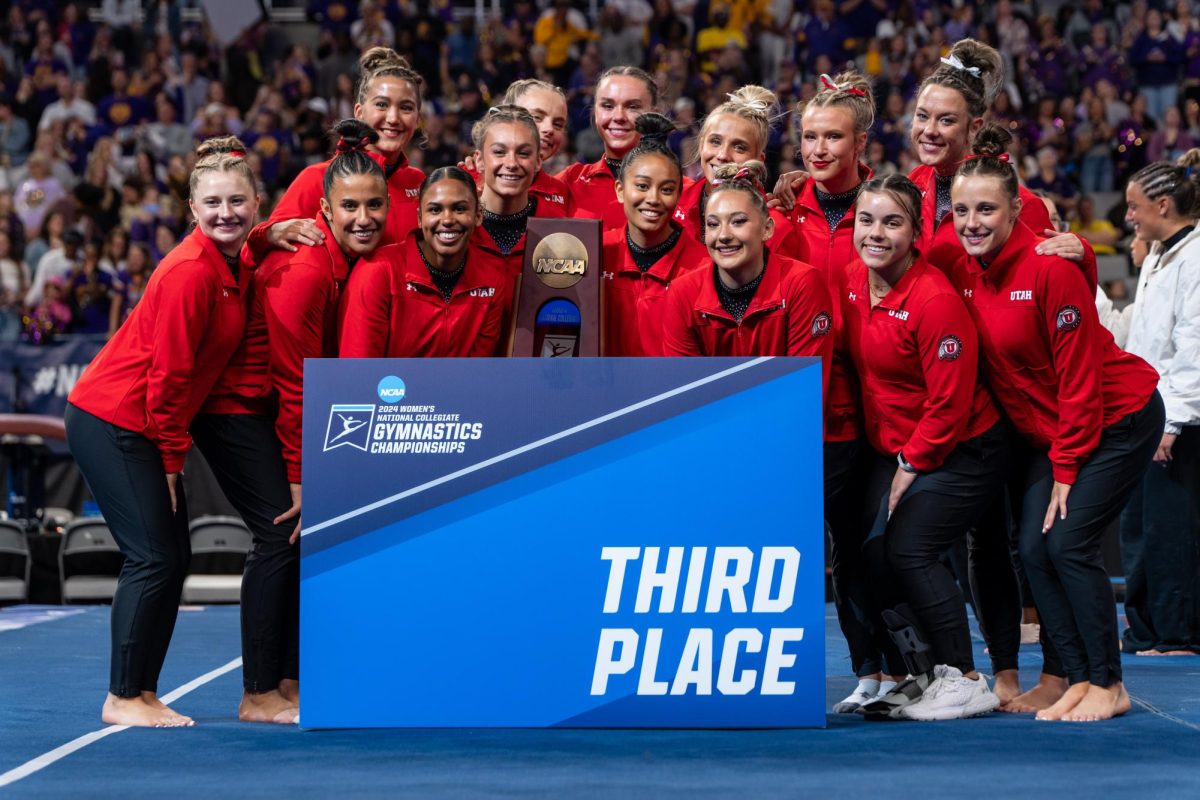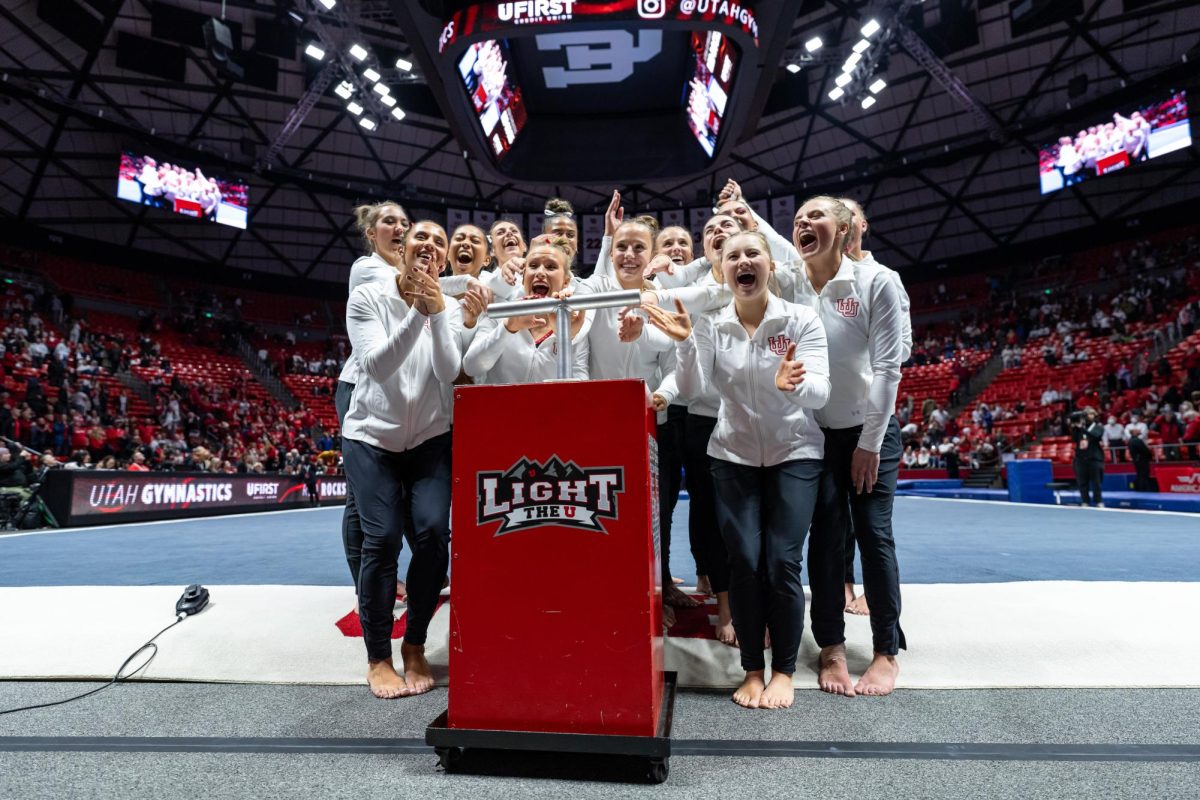The Impact Of COVID-19: Studying the Mental and Physical Challenges Three Years Later
A University of Utah student following the COVID-19 guidelines by a wearing mask while working on campus in September 2020. (Photo by Abu Asib | The Daily Utah Chronicle)
May 10, 2023
On March 11, 2020, the World Health Organization declared the COVID-19 virus a pandemic. Three years later, in-person courses have returned, masks are no longer required in public spaces and Americans across the country are reconciling with the trauma of the event.
Avaree Vowell, a senior studying graphic design at the University of Utah, said the pandemic “was a taxing year,” but the experience forced her out of toxic friendships and forced her to confront many mental hardships which led her back to going to therapy.
“It definitely affected my college experience in that my peers and I were all experiencing similar worries about class and professors and the difficulty of our program,” Vowell said. “When we got back in person and got to know each other more, we all said, ‘I’m glad I wasn’t alone in feeling that way.’”
Jason Castillo and Tiffany Baffour, both professors of social work at the U, studied graduate students after receiving an onslaught of emails from students expressing anxiety, depression and stress over housing, employment and transportation during the pandemic.
“It really led to the question, ‘What are we doing, what is the university doing to help our students?’” Castillo said.
Castillo and Baffour, in a study that is pending publication, found over a quarter of social work students had experienced both mental and physical challenges.
“COVID did have a major impact on the physical, the mental health and the academic achievement of our students,” Castillo said. “We saw a marked difference when we looked at our students of color.”
Lifetime diagnoses of mental health conditions for college students rose from 22% in 2007 to 36% in 2017, according to a Psychiatric Services study. It also found that mental health has a direct effect on academic performance.
In their research, Castillo and Baffour discovered that top-performing, low-income students saw the largest decrease in their grades and credits taken during the 2020 spring semester. Students indicated feeling socially disconnected, feared a delay in their collegiate experience and felt they had inefficient classroom and field experience to help decide on a career path.
Castillo said the COVID-19 pandemic exacerbated stressors over external factors like housing, personal finances, healthcare and childcare.
“If we look at graduate students, oftentimes they’re married, they have dependents, they’re coming to graduate school for advancement, to increase more of their revenue,” he said. ”If I can’t complete my schooling, I can’t complete my licensing examination. I can’t apply for licensure, and I can’t enter the professional workforce.”
Castillo and Baffour also found that students felt a loss of belonging and community as a result of classes being moved online.
“The bad news is that our students demonstrated mental and physical deterioration, and poor academic performance [during COVID],” Castillo said. “But our students were utilizing services, especially amongst our students of color, we didn’t see a decrease in the utilization of university resources.”
The Sorenson Impact Center’s MAPS Project works to “build student voices and high-quality data” to support universities in becoming more equitable for students, said Nicki Scott, project manager for the MAPS Project.
The project, which began in 2020, uses the STEP Dashboard to collect historical data and use statistical modeling to make demographic projections of each U.S. state up until 2030. The MAPS Project national data surveyed several impact areas of students’ well-being during COVID-19 including financial stability, mental health, physical health, technology, future plans and support systems.
Scott said the I Am Not An Outlier campaign suggests similar outcomes for students at the U as compared with the rest of the country.
“The overarching quote from that is, generally, students from lower socioeconomic backgrounds, students from minority backgrounds, those students tended to experience greater negative impacts to their higher ed experience from COVID,” Scott said.
Scott added students of color were hit harder by financial issues and became more conscious of their finances because of COVID. Hispanic students, the U’s second largest demographic group, reported the least amount of confidence in their ability to afford higher education.
“At a national level there’s a kind of picture of declining enrollment across the board,” Scott said. “But Utah is kind of interesting, it looks like key demographic groups are projected to have both an increasing college-age population and projected enrollment is increasing faster than the population.”
According to Forbes, 38% of college students who had secured an internship or job post-graduation had lost their job as a result of COVID-19. Low-income college students were 55% more likely to delay graduation as a result of the pandemic.
The Utah System of Higher Education found withdrawal rates of BIPOC students across Utah universities were much higher than the total average of student withdrawals during 2020. According to a MAPS Project research paper, rising costs and cascading effects impact students of color more so than white students.
The report also found an anticipated 2026 “demographic cliff” which represents a drop-off of traditional students resulting from lower population growth in the U.S.
According to the Pew Research Center, fertility rates dropped dramatically between 2007 and 2011, a result of this is a dramatic drop-off of college-age students, college students ranging between the ages of 18-24, is a “demographic cliff” or “enrollment cliff.” This “enrollment cliff” is expected to begin nationally in 2025 with a drastic 15% reduction in 18-year-old students.
COVID accelerated the onset of this collegiate “demographic cliff” as seen with lower enrollment in public two-year universities in Utah and higher employment in entry-level positions across the U.S.
For the 2022-23 school year, all Utah public universities saw increased enrollment. The U recently welcomed its largest freshmen class last fall.
In the College of Social Works’ “Innovation Matters” magazine, Baffour recalled a student’s comment.
“They’d rather come to class in a hazmat suit than end that aspect of their educational experience,” Baffour said.
Vowell, just like many people, considered leaving college during the pandemic lockdown because of the altered learning environment.
“I almost left because I didn’t think I was cut out for it, we were all struggling with homework,” she said. “Turns out it was just really bad communication over Zoom.”












